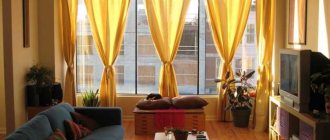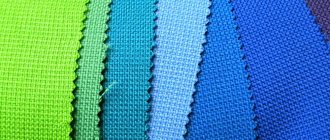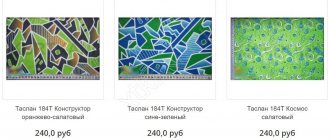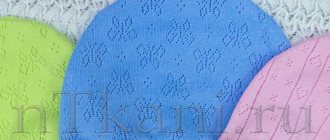Interior design features
There are a certain number of features:
- Linen has the ability to repel dirt, so curtains made from this fabric are perfect for decorating a kitchen.
- Linen curtains do not need lush drapery, as the texture of the material looks beautiful on its own. Therefore, you should not overload them with additional elements.
- Thick linen fabrics are more suitable for a bedroom or living room, where they will look expensive and stylish.
- The color of the curtains is selected in accordance with the main appearance and decor of the room.
Proper care of tulle and use in design
In order for linen curtains to last as long as possible, it is necessary to properly care for them. Linen should be washed using a delicate cycle and light detergents. Do not use too many turns when squeezing, so the curtains will not wrinkle too much. It is recommended to iron them when they are still slightly damp. Experts do not advise washing linen too often so that it does not lose its characteristics and shape. It is strictly forbidden to use aggressive preparations to clean curtains. But due to the fact that the material is treated with a special impregnation, it perfectly repels dirt and will not cause much trouble in maintenance.
If you need to change tulle, linen as a material will suit any room. The strengths of this fabric are elegance and simplicity. Designers also advise decorating curtains with tiebacks, beads or other decorative elements. If you need to add something, experts recommend using lightweight braided cords. But they don’t go well with lambrequins. It should be remembered that poorly ironed linen tulle has an ugly and unpresentable appearance.
You may also be interested in: Recommendations on how to hang tulle beautifully
White or yellowish curtains without any additions are perfect for the kitchen. They will look good in any style - from classic design to hi-tech. Tulle in light shades will fit perfectly into a bedroom or living room (regardless of the color scheme of the interior). It can be complemented with dark cotton curtains, as these materials combine perfectly.
Linen curtains and tulle are a great option for those people who value naturalness and aesthetics in materials. Such curtains will stunningly complement the interior of the room and become a real highlight of any room.
Save
Save
Save
Types of fabrics
Depending on the purpose, linen fabrics are classified into the following types:
- Linen. They are used for sewing underwear and bedding. As a rule, the material is bleached.
- Towels. The fabrics are used for sewing towels.
- Dining rooms. Bleached or plain-dyed fabrics from which tablecloths and table napkins are sewn.
- Clothes. This material can be either plain or with a pattern on the surface. The fabric is used for making clothes. Things can be used both in summer and winter. In addition to feeling cool in hot weather, linen provides great warmth.
- Applied. Used for making small decorations (mainly for clothing).
- Decorative. This type of fabric is used for interior decoration. Decorative fabric is mainly used to make curtains, upholstery or pillowcases for decorative pillows.
There is also a classification according to weaving types:
- Twill.
- Linen.
- Large patterned.
- Finely patterned.
- Openwork.
- Satin.
Depending on the density of linen fabric and the method of weaving the threads, the material is divided into subtypes:
- Canvas. Used to make painting canvases.
- Tarpaulin and canvas. Used for sewing tents, raincoats and waterproof specialties. clothes. The material is woven from thick fibers and impregnated with special water-repellent compounds.
- Sackcloth. Bags are made from this coarse type of linen fabric, but the material is often used in decoration due to its special texture.
- Batiste. Lightweight material is intended for sewing clothes and sophisticated lingerie.
- Damask. A thick type of linen fabric that is used for sewing curtains and furniture upholstery.
- Crinoline. Thick lining fabric.
In addition to the above types, there are also kolomyanka, fine linen, ravenduc, matting and teak. All except the last one are mainly used for sewing clothes (from summer dresses to men's suits).
Visher flax is also found. This is a combined natural-synthetic material. It is almost 80% polyester, with the remainder being linen and spandex.
Types of linen curtains
There are main types of linen curtains.
Curtains
They are a classic option. Linen curtains, with their neutrality, create a feeling of airiness, spaciousness and lightness in the room.
Roman
Linen Roman blinds on the window look light and gentle. They scatter light perfectly, do not collect dust and are quite easy to care for.
Blackout (imitation linen)
Blackout canvases, which do not transmit light, guarantee complete impermeability of sunlight into the room. They are not made from pure linen, but from special polyester fibers that create an imitation of texture close to natural fabric.
Curtains
Curtains made of linen voile have a unique texture and go well with a huge number of materials. Linen tulle is sometimes complemented with embroidery; during production, delicate shades act as the main colors.
Rolled
Day-night roller blinds made of linen allow even light into the room or allow you to create complete darkness in the room. Such designs look original.
Types of premises
Linen is very practical, transmitting even light, the design protects from the bright sun and prying eyes. Very convenient in premises for various purposes:
- Offices. Here it is more appropriate to develop them on rolls, since they are practical to use. For such a room it is worth considering the following options: roller blinds with electric drive, day-night or pleated.
- Vacation home. You can follow the same principles as in the apartment.
- The shops. They do not attract unnecessary attention and perfectly complement the interior.
- Cafes and restaurants. Choose fabrics with special antistatic, anti-dirt, and fire-resistant impregnations. Curtains made of organza, voile or Italian curtains will also look good here.
- Hotels, hotels, salons and spas. Sufficiently dense fabrics that provide good protection from daylight and street lighting are considered optimal.
Which style are linen curtains suitable for?
When choosing curtains for your home, experts advise proceeding from the general style of the room. Linen curtains will be appropriate almost everywhere, with the exception of those interiors where it is important to emphasize wealth and chic, for example, art deco, empire or baroque.
They can become a highlight in the following areas:
- Provence and Mediterranean style. Curtains made of bleached linen will complement the violet-olive color scheme that predominates in such rooms. The density of the fabric should match the furniture upholstery.
- Scandinavian style. Thin highlighted or thick canvas-like fabric will create a Nordic atmosphere. It will harmonize with simple furniture and themed decor.
- Classic. Linen holds its shape well and has a clear silhouette, which makes it indispensable when decorating a room in a classic style.
- Eco style. This direction initially involves the use of natural materials, among which flax takes pride of place. The density and shade of the textile will depend on the dominant theme.
- Fusion Despite the fact that this trend in interior design is modern, simple curtains made of natural linen will look harmonious here.
- Loft and minimalism. These directions do not require special decor. Natural linen captivates with its naturalness. Therefore, it is often chosen when decorating premises in these styles.
What styles are used?
Linen curtains are universal. The pronounced texture of the material is ideal for eco-style, country, classic, and modern. The best option would be linen curtains for the Scandinavian trend, which celebrates naturalness and laconicism. The material drapes well, so the curtains are suitable for solid interiors decorated in ethnic (English, Italian, Dutch, German) styles. Simple burlap curtains harmonize with the unpretentious rustic decor of a Russian hut or the decoration of a house lost in the French outback (Provence). Linen fabrics do not combine with luxurious styles that require richer fabrics. For example, curtains in the Empire, Rococo, and Baroque styles will look inappropriate.
How to choose linen fabric for curtains
When choosing curtains from this natural material, you need to pay attention to the following points:
- the shade of the canvas should be in harmony with the main decor;
- To simplify the ironing process, the manufacturer can add a little synthetic to the fabric. This will not affect its quality and environmental friendliness, but will make it easier to care for;
- if the curtain is often exposed to various influences, for example, when windows are often opened, then it is better to choose fabric with the addition of lavsan, this will protect it from creasing;
- the curtain should not completely match the shade of the walls;
- For the kitchen you need to choose short models or Roman blinds made of non-staining material, preferably with a special dirt- and moisture-repellent impregnation.
Depending on the type of thread weaving and the method of processing the fabric, its parameters and appearance may differ slightly. The following linen fiber fabrics are used to produce curtains:
- Calico. It has a simple weave and is distinguished by high density. It can be painted in bright colors. Calico is characterized by increased wear resistance, so it can withstand a large number of washes. This material reliably protects from bright light, noise and dust. Suitable for use in children's rooms.
- Batiste is a delicate, delicate fabric that is obtained by strong twisting of threads. For this, only the highest quality and thinnest threads are used. Batiste can be used instead of tulle. Mostly cambric curtains are found in light colors. Batiste can be matte or shiny. It is used to make curtains for living rooms.
- Teak is a dense material that is practical. Weaving can be plain or twill. Variegated patterns are applied to teak. This fabric is used to decorate any premises. It combines well with tulle and various textile decor.
- Canvas is a textured linen fabric that is often unfinished. Its texture is rough and dense, which helps protect the room from sunlight and street noise. The material has high wear resistance, so it is often chosen for arranging public institutions and terraces.
- Burlap is a rough, unfinished fabric. Curtains made from this material look very colorful, thanks to the lack of shine and the special, rough texture of the fabric. Burlap is chosen for furnishing rooms in country and eco style.
How to choose linen curtains
Linen curtains can be patterned.
Any home textiles should be combined with the overall atmosphere of the interior, with its idea and style. That’s why the type of fabric and design of curtains should be chosen based on personal preferences and layout features. It is recommended to consider the lighting, fabrics and materials used for furnishings, as well as the purpose of the room.
- For the kitchen, it is best to choose short, simple curtains that are easy to remove and wash. It is good if the material is treated with a special impregnation that will prevent the product from igniting. Water- and dirt-repellent treatment is also recommended.
- In a children's room, curtains can be bright, with funny patterns. It is important that the fabric washes well and withstands frequent care. It’s good if the fastening design is simple - it will be much easier to remove and hang curtains. Also, the simple design teaches the child to be independent - he will be able to control the lighting in the room himself.
- If there are small children and animals in the house, it is advisable to hang short curtains. This nuance also applies to the kitchen, where the floors need to be washed frequently - loose textile edges that drag along the floor will quickly fray.
- The color and pattern of curtains matter and can visually adjust the space of a room. Vertical stripes on curtains raise ceilings, horizontal stripes push walls apart.
- Warm shades warm the room, cold shades, on the contrary, refresh. This little trick is appropriate when creating comfortable interiors in southern and northern rooms.
- White curtains are universal, they go with everything and go with everything, but they get dirty very quickly. They are hung away from sources of moisture and dust, or they are purchased with durable textiles that will survive repeated washings and maintain a decent appearance.
- Black curtains provide excellent protection from sunlight. They are often hung in ultra-modern apartments and complement high-tech interiors. Black goes with all colors and acts as a bright, bold contrast.
Any, even the simplest curtains can be effectively draped and decorated. To do this, use braid, special hairpins and curtain clips made of metal and plastic. Fastenings help securely fix aesthetic drapery. The most beautiful folds are formed by weightless soft curtains, as well as, conversely, rigid, shape-resistant fabrics. To decorate curtains, you can purchase special decorative toys - butterflies on clothespins or wire, birds, flowers, golden tassels.
Ideas for linen curtains in the interior of rooms and premises
Linen curtains can decorate any room:
Kitchen.
Short curtains, roller blinds and Roman blinds are suitable here. They are considered more practical than sliding curtains. Linen is becoming the choice of many housewives due to the fact that it is easy to care for, does not absorb foreign odors, is resistant to changes in temperature and humidity, combines well with wooden furniture and looks harmonious on the window.
Hall or living room.
Despite their simplicity and restraint, long curtains made from this material look elegant and will help emphasize the dignity of the room. It is these qualities that attract buyers who choose textiles for the hall.
Bedroom.
Natural material, which has many advantages, is ideal for decorating a bedroom. To protect the room from bright sunlight, you can use blackout curtains. In addition, natural material helps to equalize the temperature in the bedroom and protects from drafts. Typically, long curtains are chosen for this room. Short options cannot provide a comfortable and sound sleep.
Children's room.
For a room where a child spends a lot of time, natural material will be the ideal choice. For all its simplicity, it can look interesting.
House made of wooden logs.
Linen looks harmonious against the background of natural wood.
Balcony.
Here you can choose roller or textured Roman blinds made of natural fabric. In conditions of limited space they will look very interesting.
Terrace.
Due to the fact that the fabric is highly breathable, allows you to create a cozy atmosphere and matches the natural environment, it is suitable for decorating a terrace.
Cotton curtains in a modern interior
It is impossible to imagine a material more varied in color and texture than cotton. Cotton fiber produces a uniform, high-density thread that is suitable for making a wide variety of fabrics.
Cotton is processed to give it shine, strength and long-lasting color. Mercerization is most often used: the fabric is treated with caustic soda, then thoroughly washed in cold water and dried at very high temperatures.
Mercerized cotton becomes durable and smooth, and this fabric never fades.
Cotton is dyed in a variety of colors, from bright to pastel . Often a design is applied (stamped) onto the fabric. To sew curtains, combinations of companion fabrics that are similar in color and texture are used.
Cotton, like linen, does not combine well with synthetics. But, unlike linen, cotton curtains fit perfectly into any interior, from country to baroque, they are less demanding on accessories and can have a different architectural shape.
Styles
As mentioned above, linen curtains fit perfectly into almost any interior. Exceptions are stylistics in which the richness of the decoration is deliberately emphasized, for example, Baroque or Art Deco.
However, for a classic style it is quite possible to choose such curtains if you do it with caution.
- One of the best styles to choose from for linen curtains is Scandinavian . It itself is based on an exaggerated idea of simplicity, so linen is an ideal choice for such spaces. True, fabrics with patterns cannot be used here. Natural colors such as gray or beige look best.
- Folklore style is another wonderful style option that “loves” linen window frames. It doesn’t matter what style the room is decorated in - Russian, Mexican, Georgian - painted linen curtains, models with embroidery, or even decorated using the batik technique will still suit it perfectly.
- In a rustic style, linen curtains will also look quite appropriate. For example, a linen curtain with an arch that goes to the middle of the window is a classic option for decorating a kitchen in the Country style. If it is also made of fabric with a pattern (for example, in a checkered pattern or with a floral pattern), it is possible to completely recreate the countryside summer atmosphere in the room.
- Linen curtains are also often chosen for marine In this case, a fabric similar in texture to burlap is appropriate. This is the so-called coarse, untreated flax. Usually such fabric is not even dyed, leaving it light gray, but sometimes it is bleached and it acquires a beautiful shade of ivory.
Tips for caring for the material
Linen is not only aesthetically beautiful, but also practical. If you follow a few simple rules, you can ensure your curtains have a long, flawless service:
- The technology for producing linen fabrics involves treatment with special impregnations for durability and strength. If a small stain appears on the fabric, it is better to treat a separate area than to wash the entire fabric.
- Linen curtains should be washed only with gentle products in a special mode without spinning.
- It is strictly forbidden to use bleaches or aggressive cleaners, even if there is no mark on the fabric to this effect.
- If you do not use a centrifuge when washing, the linen will be easier to iron.
- It is not recommended to steam the fabric or use a spray bottle when ironing - the fabric may shrink.
- It is better to iron curtains slightly damp.
Linen curtains:
Linen curtains look very natural in the interior, giving it completeness and adding a special warm atmosphere. Eco-friendly and durable, they retain their qualities for decades.
Colors
The choice of different color solutions is huge. In particular, when dyeing linen, mostly muted, discreet tones are used, such as beige, dark green or khaki. Olive-colored curtains are especially popular because they perfectly suit the topic of ecology, which is relevant at the moment.
You won't see bright orange or turquoise curtains, but muted blue ones are not uncommon, especially when decorating bedrooms.
Most people opt for light linen curtains. They help give the room a feeling of airiness, spaciousness, and lightness. White, light gray, light beige curtains are modern classics. They are suitable for absolutely any room, including kitchen decoration.
Linen curtains or curtains with patterns have also won the hearts of the public due to the large selection of design solutions. Both large and small printed patterns look good on linen.
Tulle made from linen is also often complemented by embroidery made in the same color as the main curtain. In particular, the main colors for the veil are white, light gray, and beige.
Sometimes you can find a combination of two colors, for example, if you need to combine curtains with furniture in wenge or walnut color. There are no strict rules about which colors to use - similar or contrasting, but one thing remains unchanged: shades should be muted, restrained, and as natural as possible.
Combinations of white and olive or khaki, white and muted blue, turquoise and beige look beautiful and trendy.
Curtain decor
Various accessories give the curtains a unique look and emphasize their style.
- Intercepted by bows. Linen curtains tied with bows instantly transform the room and make it homely and cozy.
- Lambrequins. They allow you to make the design of a room bright, spectacular and rather non-standard. Such designs look especially elegant on non-standard shaped windows, such as arches or bay windows.
- Pickups. They open up a lot of possibilities for configuring curtains.
- Hairpins. This decoration softens the contours of the window and gives it expressiveness and lightness.
- Fringe. Transforms the curtain design and is appropriate in a wide variety of styles.
Options for attaching to the cornice
There are several types of fastening:
- Eyelets. Such additional elements give the curtains style and chic.
- Loops. Using loops you can create an unusual curtain design.
- Rings. They are distinguished by great variety and are often used to decorate curtains. They give the curtains a finished and sophisticated look.
- Ties. Decorative bows and knots are a fairly common fastening option for light linen fabrics.
Design and drawings
Curtain decorations are an important function in creating the mood of a room.
With lace
Embroidery is a fairly common decoration for linen curtains. Lace gives the curtains a zest and uniqueness. Such paintings will look especially appropriate in rustic styles.
Geometry (stripe, check)
Curtains in large or small stripes, checkered, with diamonds or zigzags will perfectly complement any interior.
With flowers
Floral designs and ornaments will add sensuality and romanticism to the decor of the room.
Two-color
Combined two-color curtain solutions open up limitless window design possibilities.
With fringe
Fringe changes the appearance of curtains and makes it more impressive, flawless and seasoned. Curtains decorated with such a decorative element will definitely become the central accent of the entire interior.
Options in the interior
Option for a dining room decorated in a classic style. Curtains in natural colors perfectly complement the interior, at the same time adding tranquility to it and giving the whole composition a finished look.
Translucent two-color linen curtains for the bedroom are made in various techniques: the outer bright panels are attached directly to the tubular cornice, and the inner panels are attached to rings. This technique allowed us to visually add a little height to the room.
Curtains with grommets are an excellent option for window decoration in a Scandinavian interior. They look very neat and at the same time expensive, demonstrating the excellent taste of the owners.
Here is a Provence style room, complemented by two-tone curtains. Notice how the colors of the curtains echo the overall interior decoration. A blanket with floral motifs acts as a binding component.
The pattern, characteristic of a rustic style, looks great on linen curtains, allowing you to create a provincial-naive atmosphere in the kitchen. Such solutions add coziness to the rooms and always revive warm childhood memories.
Muted blue combined with white creates a very fresh duo. In such a room it is easy to breathe. Curtains that reach almost to the floor perfectly frame the large window of this living room. A double cornice in a contrasting color acts as a finishing element, visually balancing the proportions of the entire window space.
Roman blinds look no worse than classic sliding ones. The correct selection of colors and patterns, shown in the photo, provides an interesting idea for decorating windows in the living room.
Deciding on the length
There are no length standards for linen curtains. For the kitchen, short curtains are traditionally chosen that reach the windowsill or radiator. In the bedroom, living room, and children's room, it is better to use long curtains. In order for the curtains to look neat, their length should end on some horizontal surface: a window sill, a heating radiator, the floor, a desk placed against the window.
The material should not be allowed to “hang out”. Curtains that are too long not only get dirty faster, but also look very untidy.
Care: how to wash, iron and whether to starch
Liquid powders are used to wash linen curtains. They dissolve better in water. Select the “gentle wash” mode on the machine. Do not boil linen fabric (even white). It is advisable to starch only thin, translucent linen curtains or tulle.
You can prepare the composition yourself: “cook” the starch in water, cool, dissolve in a bowl and rinse the curtains in it.
It is difficult to iron linen fabric. It is especially difficult to cope with large canvases. While one area is being smoothed, the other may be wrinkled again by this time. It is not recommended to steam the material. In a situation with flax this is useless. The iron needs to be very hot and carefully iron out every wrinkle. The treated part of the curtain must be carefully straightened and moved to the side, not allowing it to fall onto the floor from the ironing board.
Preliminary drying of the material in a suspended state will facilitate the ironing process.
Advantages and disadvantages of linen curtains
Linen material has a lot of advantages:
- Strength. Wear resistance. Linen fabric is not easy to fray or tear. If we are talking about dense material (burlap, canvas, teak), then it is generally impossible to make a hole in it without sharp objects.
- Resistance to chemical compositions containing acids. Such products make flax softer.
- Eco-friendly and hypoallergenic. If you use the material to make furniture upholstery, then anyone can sit on such a chair or sofa, even with problematic or hypersensitive skin. The same rule applies to linen clothing.
- Breathability. The material “breathes”.
- Low peelability. No pellets are formed on the surface of the material. It doesn’t matter how long the fabric has been used.
- Does not contribute to the generation of static electricity, that is, it does not become electrified.
The disadvantages of linen fabrics include:
- Low elasticity. The material has almost no stretch.
- Lack of alkali resistance. When exposed to such compounds, linen fabric loses strength.
- A number of features when washing. Linen cannot be called a capricious fabric, but boiling even white fabric is prohibited. You can't soak it before washing either.
- Burning out under the sun's rays.
- High price.
Another serious problem is the formation of “wrinkles”, which are typical for flax, and high creasing. The material does not “hold its shape” at all after ironing. A couple of awkward movements are enough and the curtains will look wrinkled. This deficiency is especially acute in clothing. Home textiles just need to be carefully placed in their proper place and not touched unnecessarily.











